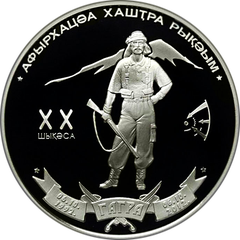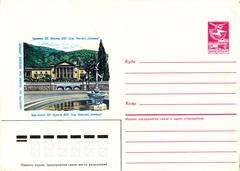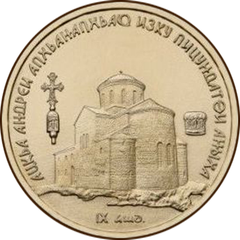
Gagra Visiting Hours, Tickets, and Historical Sites Guide
Date: 14/06/2025
Introduction
Gagra, a captivating resort town nestled on the northeastern coast of the Black Sea and framed by the dramatic Caucasus Mountains, is one of Abkhazia’s most alluring destinations. With a rich tapestry of history influenced by Georgian, Abkhaz, Ottoman, Russian imperial, and Soviet cultures, Gagra offers visitors a blend of ancient monuments, imperial grandeur, and vibrant local traditions. Known for its lush subtropical climate and unique microclimate, the town is renowned as both a historical treasure and a relaxing seaside retreat.
Visiting Gagra requires careful planning due to its complex political status and practical considerations such as transportation, accommodation, local customs, and safety. This comprehensive guide details everything you need to know: from Gagra’s history and major attractions to visiting hours, ticketing, travel tips, and important safety advice. Whether your interests lie in exploring imperial spas, ancient fortresses, or enjoying seaside leisure, this resource equips you for a memorable journey. For the latest information, consult official tourism resources and local guides (Wikipedia: Gagra, mfaapsny.org, climate-data.org).
Table of Contents
- Historical Overview and Cultural Significance
- Geography and Climate
- Key Historical and Cultural Sites
- Visitor Information: Tickets, Hours, and Tours
- Entry Requirements and Transportation
- Accommodation and Money
- Safety, Health, and Local Customs
- Food and Dining
- Nearby Attractions & Excursions
- Practical Tips and Accessibility
- Emergency Contacts
- Frequently Asked Questions (FAQ)
- Conclusion and Resources
Historical Overview and Cultural Significance
Early History and Etymology
Gagra’s roots stretch back to antiquity, serving as a crossroads of civilizations. The etymology is debated: possible Georgian origins link to “walnut” or “a place with walnut trees,” while Abkhaz roots may reference the “closed coast.” These interpretations embody Gagra’s multicultural legacy (Wikipedia: Gagra).
Medieval and Ottoman Periods
As part of the medieval Kingdom of Abkhazia and later the unified Georgian Kingdom, Gagra became home to significant Christian sites like the 6th-century Gagra Church (Abaata), reflecting early Christian architecture (Wikipedia: Gagra Church). Ottoman rule from the 16th century led to considerable decline and depopulation.
Russian Imperial Era and Resort Development
The Russian Empire revived Gagra in the 19th century, draining swamps and rebuilding the town. Prince Alexander of Oldenburg established a spa resort in 1901, constructing the Prince’s Castle—an emblem of early 20th-century grandeur (mfaapsny.org). The Gagra Church was restored and rededicated in this period.
Soviet Era: National Resort and Cultural Hub
Under Soviet rule, Gagra became a prominent health resort for the USSR elite. The Prince’s palace transformed into the Chaika Sanatorium, and the town flourished as a cosmopolitan retreat (rfro.ru).
War in Abkhazia and Contemporary Culture
The 1992–1993 conflict caused heavy destruction and a demographic shift, notably reducing the ethnic Georgian population. Today, sites like the Gagra Church are protected monuments, while the town’s multicultural heritage remains evident (Wikipedia: Gagra District).
Geography and Climate
Location and Landscape
Situated between the Black Sea and the Caucasus foothills, Gagra’s dramatic geography creates a unique microclimate. The Bzyb River and nearby nature reserves, such as Ritsa Relict National Park, enhance its lush scenery (climate-data.org).
Climate
- Summers: Warm and humid, with average highs around 24–25°C (75–77°F) (weatherspark.com).
- Winters: Mild, with highs near 6°C (43°F); snowfall is rare at sea level.
- Rainfall: Annual average of 1,535 mm, wettest in winter (weather-and-climate.com).
- Best Visiting Season: Early June to late September, when the sea is warm and rainfall is lowest (wander-lush.org).
Key Historical and Cultural Sites
- Gagra Church (Abaata): 6th-century basilica; open daily 9:00–18:00, free entry.
- Prince of Oldenburg’s Castle: Early 20th-century landmark; currently closed for restoration, but exterior can be viewed (rfro.ru).
- Abaata Fortress: Historic ruins accessible year-round, no ticket required.
- Gagripsh Restaurant: Historic eatery with a famous manually wound clock; open daily 10:00–23:00.
- Gagra Seaside Promenade: Palm-lined walkway with historic architecture and sea views.
- Colonnade of Gagra: Iconic Soviet-era photo spot at the promenade’s entrance.
- Botanical Garden: Displays subtropical flora; peaceful setting for relaxation.
Visitor Information: Tickets, Hours, and Tours
Tickets and Access
Most outdoor sites, such as fortresses and the promenade, are free. Small entrance fees apply for sites like the Prince of Oldenburg’s Palace and Ritsa National Park. Event and guided tour tickets can be purchased through local operators or at site entrances.
Opening Hours (Typical)
| Attraction | Hours | Ticket Price |
|---|---|---|
| Gagra Church (Abaata) | 9:00–18:00 | Free |
| Prince of Oldenburg’s Castle | Closed (view exterior) | N/A |
| Gagra Fortress | 9:00–18:00 | Free |
| Ritsa Relict National Park | 8:00–19:00 | ~200 RUB (~3 USD) |
| Gagripsh Restaurant | 10:00–23:00 | Free (meals extra) |
Guided Tours and Special Events
Local agencies offer historical and cultural tours, often including transportation and multilingual guides. Check official tourism websites or local hotels for event calendars and tour availability.
Entry Requirements and Transportation
Entry Requirements
Gagra is within Abkhazia, whose political status is disputed. Entry is primarily via Russia through the Psou checkpoint. Entering Abkhazia from Russia without Georgian authorization is considered illegal by Georgian law and may lead to legal issues (gov.uk).
- Russian citizens: Internal passport accepted.
- Foreign travelers: Usually require special permits if entering via Georgia, but direct entry from Georgia is restricted.
Getting to and Around Gagra
- From Russia: By car, train, or bus to the Psou border, then minibus or taxi to Gagra (30 km from the border).
- Local Transport: Minibuses (“marshrutkas”) run frequently; taxis are widely available (negotiate fares in advance). Walking is practical in the compact town center.
Accommodation and Money
Where to Stay
Options range from guesthouses and mini-hotels to Soviet-era sanatoriums. Quality varies; advance booking is recommended, especially in peak season. Most properties require cash payment in Russian rubles.
Currency and Payments
- Currency: Russian ruble (RUB) only.
- ATMs: Scarce; bring sufficient cash.
- Credit Cards: Rarely accepted.
- Exchange: Exchange currency before arrival, as services are limited locally.
Safety, Health, and Local Customs
Safety
Gagra is generally safe, but petty scams (especially in accommodation or excursions) can occur. Exercise caution when swimming, hiking, or exploring abandoned buildings. Avoid political discussions and demonstrations.
Health and Medical Services
- Medical Facilities: Limited; bring essential medicines.
- Water: Drink bottled water.
- Insurance: Strongly recommended; ensure coverage includes Abkhazia.
Local Customs
- Language: Russian is predominant; English is rarely spoken.
- Dress: Modest attire for religious sites; casual elsewhere.
- Service: Service quality varies; politeness is appreciated.
Food and Dining
Enjoy local Abkhazian and Russian cuisine at restaurants and markets. Specialties include khachapuri, adjika, fresh seafood, and regional wines. Tipping is not required but appreciated (5–10%).
Nearby Attractions & Excursions
- New Athos Monastery and Cave: Stunning monastic complex and vast karst cave (~30 km south).
- Ritsa Relict National Park & Lake Ritsa: Alpine lakes, waterfalls, flora, and fauna (~50 km northeast).
- Pitsunda: Renowned for ancient pine groves and an early Christian basilica.
Practical Tips and Accessibility
- Weather: Pack for variable conditions; rain gear and layers recommended.
- Transport: Roads can be winding and rough; local drivers or tours advised.
- Communication: Russian SIM cards work; Wi-Fi is slow and limited.
- Accessibility: Seaside areas are accessible, but historic and mountain sites may present challenges for those with mobility issues.
- Environmental Care: Respect local nature—dispose of waste properly and avoid damaging flora.
Emergency Contacts
- Police: 102 (Russian-speaking)
- Ambulance: 103
- Tourist Assistance: Seek help from accommodations or local guides.
Frequently Asked Questions (FAQ)
Q: What are the visiting hours for Gagra’s main attractions?
A: Most sites open between 8:00–19:00; specific hours vary by attraction.
Q: How can I buy tickets for historical sites?
A: Most outdoor attractions are free; tickets for parks or palaces are sold on site. Guided tours can be booked in advance.
Q: Is it safe to visit Gagra?
A: Generally yes, but remain vigilant for petty scams and be aware of political sensitivities.
Q: What is the best season to visit Gagra?
A: Early June to late September is ideal for beach and outdoor activities.
Q: Can I use credit cards in Gagra?
A: Credit cards are rarely accepted. Carry Russian rubles in cash.
Conclusion and Resources
Gagra offers a rich blend of history, culture, and natural beauty—an unforgettable Black Sea destination for those prepared to navigate its unique challenges. From ancient fortresses and imperial palaces to subtropical beaches and vibrant markets, Gagra rewards travelers with diverse experiences. Careful planning, respect for local customs, and up-to-date information will ensure a safe and rewarding trip.
For the latest updates on visiting hours, tickets, and events, consult official resources and consider using travel apps like Audiala for interactive maps and guided tours. Stay connected via social media for inspiration and travel news.


